We always put on Joni on our road trips, at least once a
trip.
“Sitting
in a park in Paris France
Reading the news and it sure looks bad
They won't give peace a chance
That was just a dream some of us had
Still a lot of lands to see
But I wouldn't want to stay here
It's too old and cold and settled in its ways
here
Oh but California”
That’s
the dilemma, LA or Paris, cold and settled in its ways.
Still
the intrigue remains.
On
the flight here, I read the Pox Lover, Ann-christine d’Adesky’s
memoir of activism and Paris and New York, stories about walking on the Seine,
about being and living and walking and culture seeping in, the movable feast that
keeps on moving.
Our
teenager has seen New York and Paris is uncertain, locked down again.
The California
sun is compelling.
Driving,
the images of green hills and farm workers fill the windows, on our way through
Paso Robles, San Luis Obispo, missions. Looking out
at the farmland, I think of Steinbeck and the Grapes of Wrath, Cannery Row,
etc.
It's
not a California road trip without a stop at In N Out Burger. I recommend the
protein burger. The servers are wearing masks.
A couple of kids are fighting with their parents. Odd times growing up. Might not be the best road trip they are
about to engage.
Ninety
minutes our of town, the traffic starts to snarl into a sea of cars.
An ominous
feeling.
“This
traffic is making my decision more complicated,” says the teenager.
The reality
is Los Angeles is a place in ecological flux, on the edge of two continents. “[T]he
shelves provided a “land bridge” between the two continents,” says National Geographic. Earthquakes and fires are common. Its main thoroughfare, highway ten, was built
along the San Andreas Fault, intersecting with it in Coachella Valley. Living in Los Angeles means contending with a social
history of a colonized city and the social forces of immigration and displacement,
sprawl and anomie. It also means contending
with ecological history, as movements on tectonic places impact everyday life
in countless ways.
In Rough-Hewn
Land: A Geologic Journey from California to the Rocky Mountains,
“Each
scenario is about fifteen million years into the future, and each assumes that
the Pacific Plate will continue to move northwest at about 2.0 inches per year
relative to the interior of North America. In scenario 1, the San
Andreas fault is the sole locus of motion. Baja California and coastal
California shear away from the rest of the continent to form a long, skinny
island. A short ferry ride across the San Andreas Strait connects LA to San
Francisco.
In scenario 2, all of California west of the Sierra
Nevada, together with Baja California, shears away to the northwest. ….In
scenario 3, central Nevada splits open through the middle of the Basin and
Range province....”
Ecologists all have hypotheses. With each quake, they become more outlandish,
particularly during late night conversations at the Dresdon Room. At least that was my experience.
Moving
closer, we pass an exit for Mulholland
Drive. Images the surrealist David Lynch
movie scenes flash through my mind, the trip between here and there blurring
between this life and somewhere else. Of course, there was also the Mulholland
who devised the water plan, we learned about in Chinatown.
Movies
and history overlap in countless ways here.
You see it everywhere, on exists to San Dimas where Bill and Ted had an
excellent adventure.
A hour
later, we get to Venice Beach, in time for skating.
A
cavalcade of people, mostly in bathing suits, make their way up and down the boardwalk.
The
beach is filled with skaters, vagabonds, and homeless sleeping a in tent city.
Its like the dust bowl here, the smell of pot, bodies in motion, green, yellow,
blue, brown on bikes.
Striking
murals.
“Never
St Mark the Patron Saint of Venice” says one building size image of the saint
in white on a blue wall. The images
remind me of Naples, where similar murals are everywhere.
“Light
comes in all colors,” says one artist’s work.
People
in bikinis, stating, half dressed, kids on scooters, jetting into the air, out
of the bowl.
Packed
between Mexico and Canada, with an ocean and Asia further West, this land has
much to inform us. Indigenous people its earliest inhabitants, once a Mexican
space, then a Spanish colony, El Pueblo de la Reina de Los Angeles (The Town of the Queen
of Angels) was founded on September 4, 1781.
For , Spain's
colonization of the region seemed to be a reaction to Russian movement into
Alaska and Northern California. Expansive
shores drew developers and religious fanatics, including Abbot
Kinney. writes:
“In 1905, Kinney opened
“Venice of America,” a planned seaside community which featured its Italian
namesakes Italianate architecture and copied its world-famous
canals. Kinney constructed seven man-made canals with
fanciful names including the Grand Canal, Venus and Aldebaran. Tourists could
travel by gondola to take in the new city, and private cottages soon dotted
highly-coveted canal-front lots.”
Caroline and I sit on
the beach as the kids skate, the sun descending in the horizon.
Next day, everyone
takes it slow.
A little skating.
And then a trip out to
UCLA.
It’s kind of epic.
I can’t believe we’re
here.
Bobby Colomby, Caroline’s
dad’s best buddy from years and years ago touring with Blood Sweat and Tears,
joins us in Westwood. He lived on the
East Coast too, going to CCNY, before he made his way out West. It took him about three months to decide this
was for him. A warm place where moods elevated, he didn’t look back.
Over our two hour
lunch, he tells us stories about jamming with Jimmy Hendrix, talking guitar
with Paul Simon, running around town with Bruce Willis, discovering Jaco Pastorius,
rooming with Pam Greer, and touring with Al Smith, Caroline’s dad, recalling him
arranging a song, and booking a new hotel in a flash.
I love talking music
with him, dropping names of drummers to hear what he knows.
I mention Keith Moon.
“I saw him in town here
with his head on the table,” says Bobby.
“Sat town and introduced myself. Moon was complaining about ‘Roger’ the
singer for his band.” The two swapped stories about the idiosyncrasies, of their
respective lead singers. David Clayton-Thomas was the more eccentric. For every story Moon could recall about
Daltry, Colomby could top it his band’s singer.
What about Gene Krupa’s
drum solo in “Sing, Sing, Sing” ?
Not that hard, says
Bobby.
He pauses, telling a story
about meeting him for a goodbye party with other drummers before he shuffled
off.
“You know I wasn’t that
good,” says Krupa, the
drummer once known as a one-man army, the original king of swing, who
turned out to be a humble guy.
On and on the stories
go.
I’ve been lost in the tapes
of Chick Corea in the Bitches Brew sessions, I follow.
Such a wonderful guy,
says Bobby, wearing a t shirt that says, “Weapons on Mass Percussion.”
On and on, we talk
about Los Angeles and music and cultural history.
He drives us through the
neighborhood, past Tiffany’s where Audre Hepburn ate breakfast and Alicia Silverstone
shopped in Clueless, and the Viper Room, where River Pheonix shuffled from
this world to the next, and Chateau Marmont, where John Belushi took his final
bump and on and on, through the Sunset Strip, where the Doors played, Barry
Sanders saw Lenny Bruce and that opened up a history of ideas and humor for him,
that he told us about at Pitzer. We all find
our own histories here. On Bobby takes us,
past Barney's Beanery in West Hollywood.
This is a place to get away from the New York that is always pushing you
beyond what you want to do, he says. My
experience is different. I found LA another
tough city. But he’s got me thinking. We make our way through Beverly Hills and
back to Venice.
Judy meets us at a
coffee shop before we make our way to the beach.
And Prageeta, another Brooklyn
transplant, meets us for a bite. She’s
now teaching at Pomona.
The next morning, the
teenager and I make our way east on highway ten to Pitzer College, where I first
found my base in California three decades ago. Nested an hour East of Venice
and another West of Joshua Tree, Claremont is a distinct place, the mountains
on one side, the dessert the other. With
five ideologically distinct undergrads and a grad school, it is a unique college
town.
Our first stop is at Pitzer,
my alma mater. Cacti and graffiti, mark the paths around the campus in the
dessert. The cactus garden has expanded throughout the campus. We check out the
Grove House, where Taj Mahal smoked a jay with us. And the dorms and art studios where bands
played. Ghosts of my former professors
everywhere, we walk to the academic complex, places where I ate shrooms and
read Proust and wrote drafts of novels and conducted oral histories and met
friends, on and on and on.
The neurotypical garden
intrigued, with a mural that reads:
“Engage
with everything becoming – make a common world.”
And
off we wander to Harvey Mudd and Scripps and Pomona and the Grad School and
back, looking at coffee shops where a friend read the Golden Notebooks
and a secret pool where we swam late into the night.
By
the time we’ve seen all five campuses, I’m exhausted.
Off to Pasadena to see Mike, my old Pitzer roommate, who drove across the country
with us, and back to Venice to drink beer on the roof, before a quick dip into the
water.
It
was not a quiet night.
“Get
out!!!” a woman screams over and over in one of the homeless camps.
No
idea if the intruder was in head or in our world.
Voices
in her head unwelcome intruder, thoughts not quite sure at all.
The
dustbowl in a pandemic is not always a welcome place.
We
go for coffee and another stroll on the beach the next day before departing.
Our trip
up to Pacifica to see Ron, the DogsinSpace podcast keeps us company.
In Central
CA, we stop for a bite of deliciousness at a taco truck, on the way back to SF.
Stories
about the Dead Kennedy’s on the podcast help us make our way.
“It’s
the suede denim secret police,” everyone does their own Jello impressions.
Everyone
needs Jello.
There’s
always room for Jello, his campaign slogan.
Dodi
is anti Dodi, she says it over and over again, like Dada.
We’re
still unsure if Dada would have liked a day like this.
Maybe,
maybe not? Why so serious?
Who
knows where any of us will land, where the teenager will?
Ron landed
here out of nowhere, a transplant from Queens welcoming us.
The
kids are growing up and out, lives in flux, moving, navigating complicated
terrain.
“Celebrate,”
a man screams at the gas station.
“I’ll
celebrate when everyone is vaccinated,” says the teenager.
Big
city vs small town, making our way from here to there, choices everywhere, lots
to think about on the road.
Who
knows what’s going to happen out there, kids coming, growing, going.
Who
knows what’s going to happen?
But
in a few years, they are all going to be gone, out on their own adventures.
Travel
was fun along the way.
Ron greets
us for a quick BBQ in his backyard, with his teenagers, before we make our way
to our hotel.
Just
as we began a week before, its dark as we leave Pacifica the next morning.
Pictures
of Harvey Milk remind everyone in the airport at SF Airport.
“Harvey
Milk lives” declares the graffiti.
Our days
in California were a joy.







































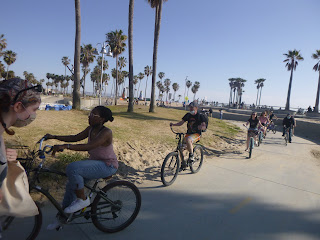






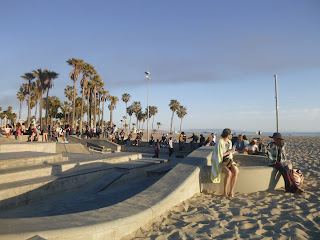









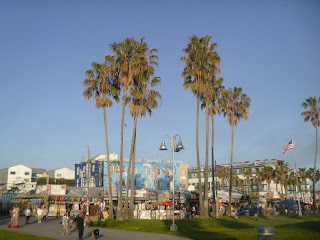


















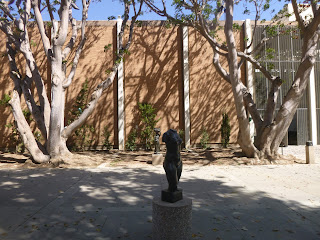












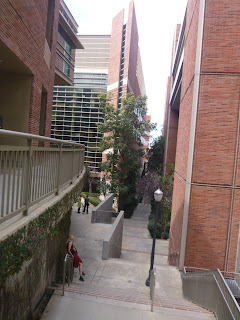



























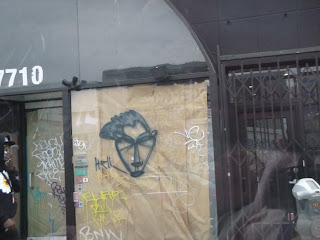




















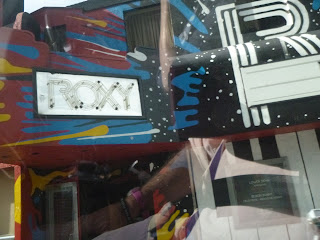





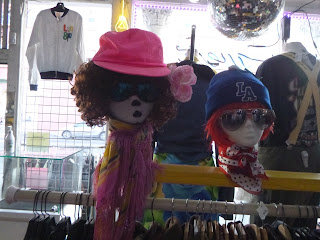









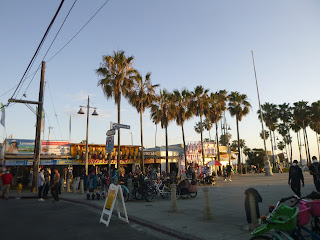


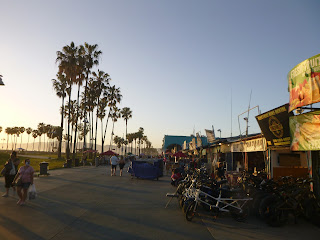



























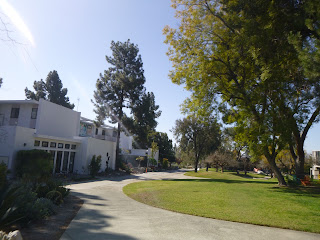















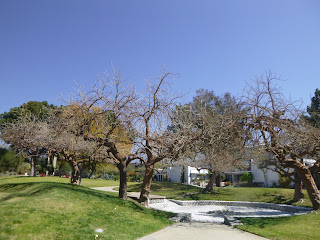

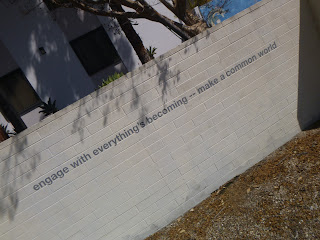




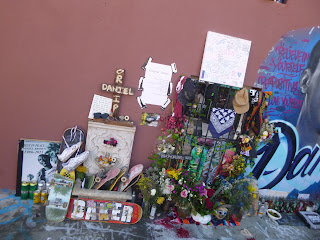

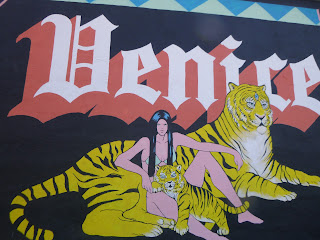














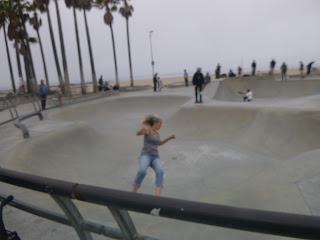

















No comments:
Post a Comment